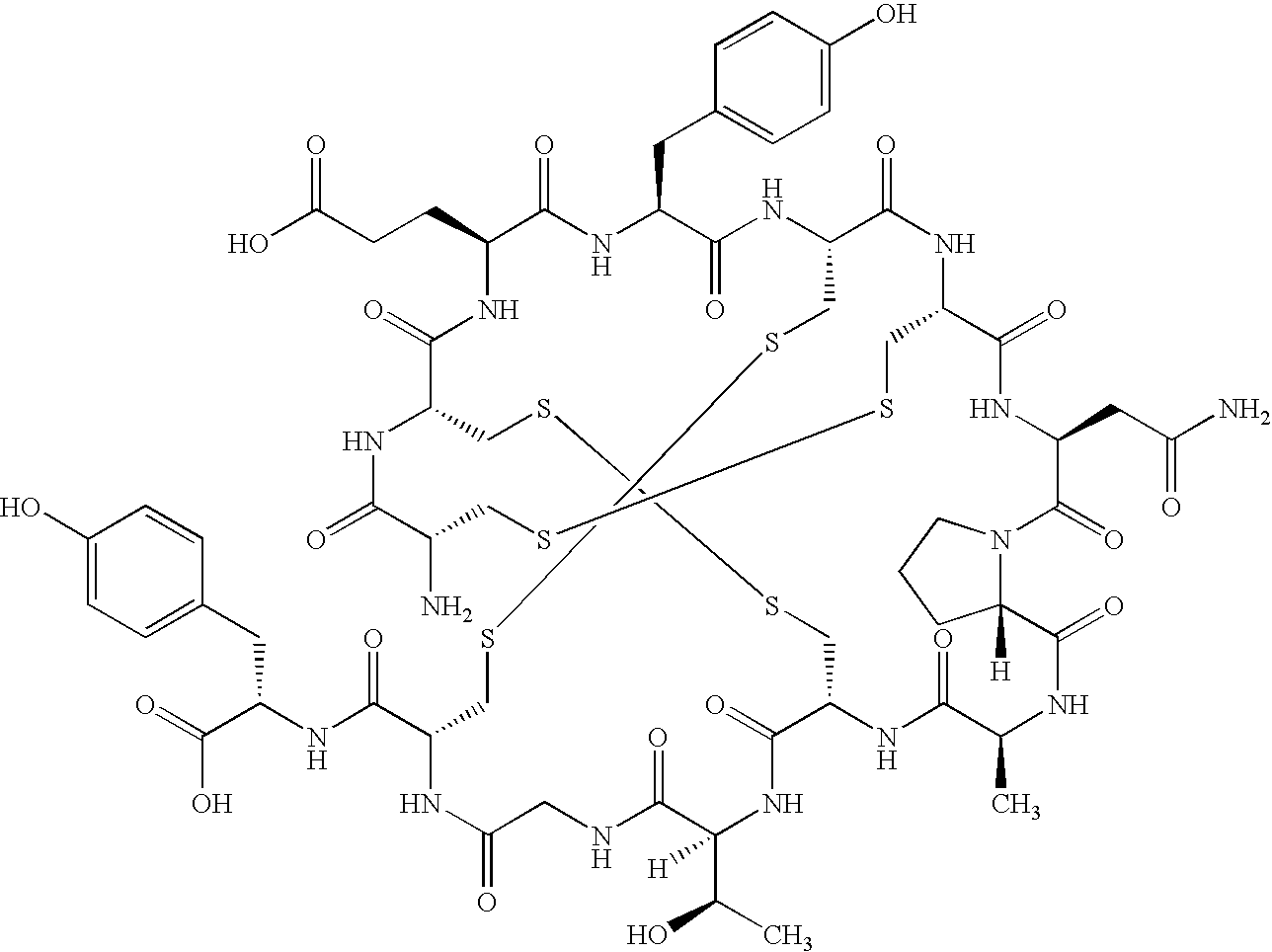Process for isolating therapeutic peptides
a technology of peptides and peptides, which is applied in the direction of peptides, peptide/protein ingredients, immunoglobulins, etc., can solve the problems of unmet medical needs, reduced quality of life of patients with ibs, and tremendous unmet medical needs
- Summary
- Abstract
- Description
- Claims
- Application Information
AI Technical Summary
Problems solved by technology
Method used
Image
Examples
example 1
[0107]Into a 1-neck, 3-L round bottom flask was placed 1500 mL of a 50% aqueous isopropanol solution of approximately 50.2 g SEQ ID NO. 1, which contained residual amounts of acetic acid and trifluoroacetic acid from HPLCchromatography. Analysis (HPLC, area normalization) of the initial product indicated a purity of 97.4%.
[0108]The flask was placed under reduced pressure (34 Ton) on a rotary evaporator and partially immersed in a 30° C. bath. A granular, white suspension was formed by feed-stripping approximately 6500 mL of isopropanol over 396 minutes at such a rate as to maintain approximately 1500 mL of liquid in the 3-L flask. Analysis of the suspension (GC, area normalization) indicated water (1.8%) and isopropanol (98.2%).
[0109]The flask was placed under reduced pressure (46 Ton) on a rotary evaporator and partially immersed in a 30° C. bath. A more-granular white suspension was formed by feed-stripping approximately 6000 mL of heptane over 210 minutes at such a rate as to mai...
example 2
[0116]The above general procedures were followed replacing isopropyl alcohol (IPA) with ethanol.
[0117]Table 1 below shows the amount of SEQ ID NO. 1 that is able to be dissolved in the aqueous ethanol solution, depending on the v / v % ethanol:water. The very sharp increase in solubility between 50-70 ethanol was very unexpected and the discovery of this unexpected result allowed for the successful isolation of SEQ ID NO. 1 by precipitation which was necessary for a viable large manufacturing scale-up required for commercial production.
TABLE 2EtOH (v / v %)SEQ ID No. 1(mg / mL)00.5050.25100.75151.00200.75253.00303.00352.75402.25453.50509.2555179.2560347.5065430.0070441.5075304.008045.258510.259010.00953.751000.50
example 3
Precipitation and Isolation of SEQ ID No. 1
[0118]The above-described procedures for isolating SEQ ID No. 1 involved removal of water by vacuum feed stripping with isopropanol or ethanol and then with heptane in a rotary evaporator. Solvent removal by rotary evaporation was utilized to minimize potential product degradation and yield loss due product adhering to the upper surface of the flask. This procedure furnished product which was very easy to handle and to filter. However, removal of residual solvents, particularly heptane, required “humidification” with a stream of water-wet nitrogen and subsequent treatment with dry nitrogen. The purity during this entire isolation procedure decreased from 97.4% to 97.0%.
[0119]The current process stream consists of SEQ ID No. 1 in approximately 50% aqueous isopropanol. This ratio of water and isopropanol is used to ensure maximum product solubility. In order to minimize product degradation, this process stream is usually stored at approximate...
PUM
| Property | Measurement | Unit |
|---|---|---|
| Fraction | aaaaa | aaaaa |
| Fraction | aaaaa | aaaaa |
| Fraction | aaaaa | aaaaa |
Abstract
Description
Claims
Application Information
 Login to View More
Login to View More - R&D
- Intellectual Property
- Life Sciences
- Materials
- Tech Scout
- Unparalleled Data Quality
- Higher Quality Content
- 60% Fewer Hallucinations
Browse by: Latest US Patents, China's latest patents, Technical Efficacy Thesaurus, Application Domain, Technology Topic, Popular Technical Reports.
© 2025 PatSnap. All rights reserved.Legal|Privacy policy|Modern Slavery Act Transparency Statement|Sitemap|About US| Contact US: help@patsnap.com

